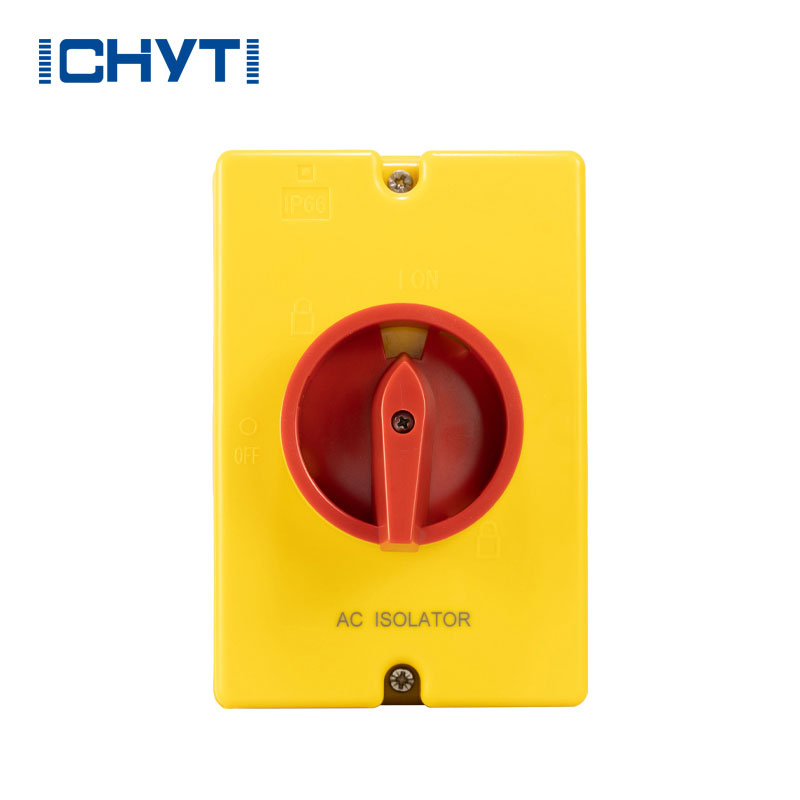Why Is an Isolator Switch Essential for Ensuring Safety and Efficiency in Electrical Systems?
2025-02-27
In today’s world, electrical systems are central to nearly every aspect of life, from powering homes to facilitating industrial operations. One critical component that often goes unnoticed, yet plays a crucial role in ensuring the safety and efficiency of these systems, is the isolator switch. But why exactly is an isolator switch so important, and how does it contribute to the overall functionality and safety of electrical systems? In this blog, we will dive into the significance of isolator switches, how they work, and why they are indispensable in both residential and industrial settings.
What Is an Isolator Switch?
An isolator switch is a type of electrical switch designed to disconnect a part of an electrical circuit from its power source. Unlike other types of switches that are used for regular operation, isolator switches are used specifically to safely isolate electrical equipment during maintenance, repairs, or installation processes. This ensures that no electrical current flows to the equipment, reducing the risk of electrical shocks, fires, or other hazards.
Isolator switches are typically used in high-voltage and low-voltage electrical systems. They are commonly found in industrial settings, power stations, substations, and residential electrical panels.
How Does an Isolator Switch Work?
The primary function of an isolator switch is to break the connection between the electrical supply and the equipment, making it safe for technicians or electricians to work on the system. Here’s how it works:
1. Disconnecting the Power Source:
The isolator switch is installed in such a way that it can cut off the power supply to specific equipment or circuits. When the switch is activated, it creates an open circuit, which means no electrical current can flow through the line. This allows workers to safely work on the system without the risk of electrocution.
2. Manual Operation:
Isolator switches are usually manually operated and require human intervention to open or close the circuit. The design of the switch allows for a clear visual indication of whether the circuit is open or closed, ensuring that workers can easily verify whether the equipment is disconnected from the power supply.
3. No Load Switching:
It’s important to note that isolator switches are not designed to be operated under load, meaning they should only be used to disconnect the equipment when no electrical current is flowing through it. Operating an isolator switch while the circuit is under load could cause dangerous electrical arcs, leading to potential damage to the switch and surrounding equipment.
Why Is an Isolator Switch Important for Electrical Systems?
1. Enhanced Safety:
The most important function of an isolator switch is safety. By isolating electrical equipment from its power source, it ensures that technicians can perform maintenance, repairs, or installations without the risk of electrical shock or accidents. This is especially crucial when working with high-voltage equipment where the danger of electrocution is more significant.
2. Prevention of Electrical Hazards:
In the absence of an isolator switch, maintenance workers would have to rely on the general circuit breaker or fuse, which might not effectively isolate all parts of the circuit. Isolator switches ensure that certain parts of the system can be completely isolated from the power supply, preventing potential electrical fires, short circuits, or other electrical hazards.
3. Compliance with Regulations:
Many electrical safety standards and regulations require the installation of isolator switches in certain parts of electrical systems. In industries and commercial buildings, isolators are often mandated by law to ensure safe working conditions for electrical professionals. Ensuring compliance with these regulations helps businesses avoid legal liabilities and promotes the overall safety of the workplace.
4. Improved Maintenance Efficiency:
By safely isolating circuits or equipment, isolator switches allow maintenance personnel to work more efficiently without the need for extensive shutdowns of the entire electrical system. This can minimize downtime and prevent disruptions to regular operations in industrial and commercial settings.
5. Protection of Electrical Equipment:
Isolator switches are also useful for protecting electrical equipment. When isolating certain parts of the circuit, the switch prevents the accidental flow of current to vulnerable components, reducing the risk of damage from short circuits, overloads, or electrical faults. This helps extend the lifespan of the equipment and minimizes costly repairs.
Applications of Isolator Switches
Isolator switches are used in a wide variety of settings, from small residential electrical systems to large industrial power stations. Some common applications include:
1. Residential Electrical Systems:
In homes, isolator switches are often used in main distribution boards or circuit breaker panels to isolate specific circuits during maintenance. They can be used to disconnect power to appliances or entire circuits, ensuring safe working conditions for electricians.
2. Industrial and Commercial Applications:
Isolator switches are essential in industrial plants, factories, and commercial buildings, where large electrical systems are often in use. These switches are used to isolate parts of the system for maintenance or troubleshooting. For example, isolators are often used to shut down individual machines or entire sections of machinery in a factory without affecting the rest of the plant.
3. Power Stations and Substations:
In power stations and substations, isolator switches are used to disconnect high-voltage circuits during maintenance or emergencies. These switches can isolate entire sections of the power grid, preventing faults from spreading throughout the system and ensuring a safer environment for workers.
4. Solar Power Systems:
In solar power installations, isolator switches are used to disconnect solar panels from the inverter or the grid. This ensures that maintenance work can be carried out safely on the panels or the electrical system without the risk of electric shock.
How to Choose the Right Isolator Switch
When selecting an isolator switch, there are several factors to consider to ensure that it meets the specific needs of your electrical system:
1. Voltage Rating:
Choose an isolator switch that is rated for the voltage of your system. For high-voltage applications, such as industrial systems, you’ll need a switch that can handle the higher voltages without causing damage.
2. Current Rating:
The isolator switch must be able to handle the maximum current load of the circuit or equipment being isolated. Always check the current rating to ensure it matches the system requirements.
3. Durability and Weather Resistance:
If the isolator switch is to be used in outdoor or harsh environments, ensure it is durable and weather-resistant. Some isolators are designed to be used in extreme temperatures, humid conditions, or exposure to chemicals and corrosive materials.
4. Switch Type:
Isolator switches come in various designs, including rotary, pull-out, and push-button types. Choose the one that best suits your installation requirements and provides easy manual operation.
5. Compliance with Standards:
Ensure that the isolator switch you choose complies with local electrical codes and regulations. This ensures that the switch meets the required safety and performance standards.
Conclusion
An isolator switch is an indispensable component for ensuring the safety, efficiency, and protection of electrical systems. Whether used in residential, commercial, or industrial applications, isolator switches provide a reliable means of disconnecting electrical equipment for maintenance or repairs while minimizing the risk of electrical hazards. By understanding the importance of isolator switches and selecting the right one for your system, you can ensure a safer and more efficient electrical setup, ultimately contributing to the long-term performance and reliability of your electrical infrastructure.



